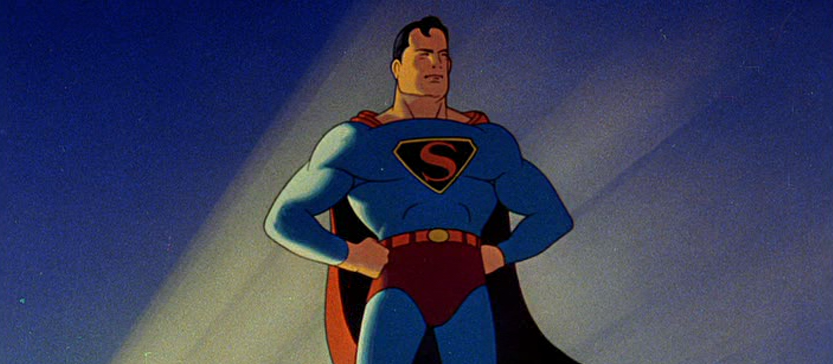
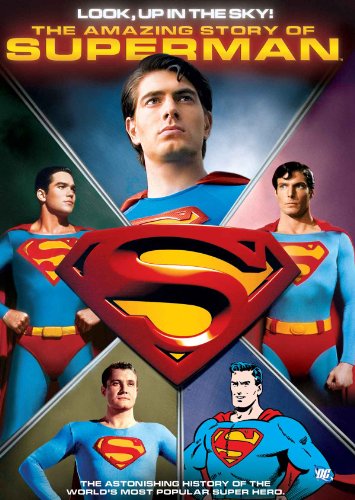
“My dad would give me a dime to buy every new issue of Superman.”
In 2006, nearly two decades after Christopher Reeve’s last outing as the Man of Steel, Superman Returns once again brought the character to movie theaters. Coinciding with that film’s release, documentarian Kevin Burns put together Look, Up in the Sky which chronicles the iconic superhero’s origins, rise to fame, fluctuating popularity, adaptations into various media, merchandising efforts, and cultural impact. Narrated by Kevin Spacey—who gets to amusingly refer to himself in the third person when speaking of his role as Lex Luthor in Superman Returns—the documentary provides a wealth of historical context along with a very nice selection of interviewees to paint a picture of Superman as the cultural phenomenon that is ubiquitous today. There were certain areas that I wish had been explored more, and several that received more time than they deserved, but it definitely increased my interest in some of the comics runs as well as my appreciation for the film adaptations starring Reeve.
I was passably acquainted with the Christopher Reeve films, but most of my knowledge of pre-1970s Superman was fairly sketchy. Tracing the characters origins from his initial conception as a bald supervillain to the Kyrptonian raised on earth is quite interesting. The character’s creators, Jerry Siegel and Joe Shuster, first conceived of the Superman in 1933, but it wasn’t until 1938 that he was finally formed into the iteration that went to print (and that we know now) in Action Comics #1, a rare collector’s item today.1 I knew that vintage comics could fetch insanely high prices and I always assumed that value was simply determined by a few rich collectors; but it actually turns out that, although comic books were very popular in the 1940s, many of the 10 cent books were lost to the World War Two recycling effort.
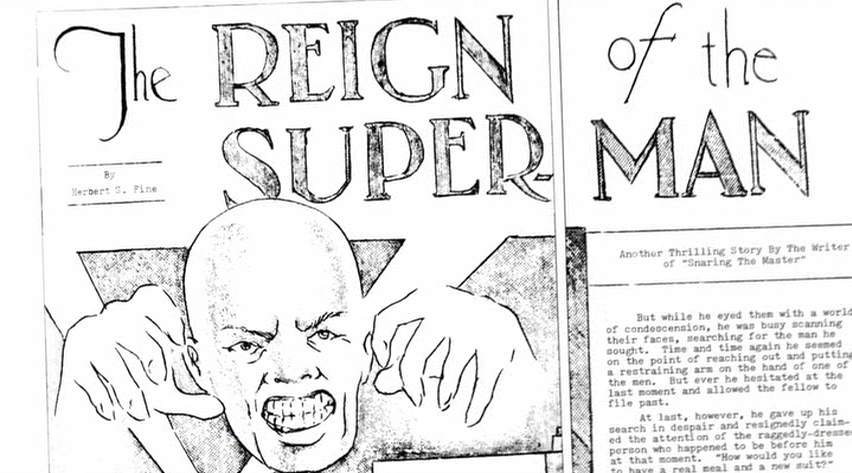
Soon, Superman was in newspaper strips, on the radio, and in cartoons. The Fleischer brothers animated adaptation was the first time that Superman was given the ability to fly (prior to that he could just jump really high), and the animation still looks amazing today. The first live-action adaptation was a children’s serial in 1948, but the George Reeves-starring B-movie, Superman and the Mole Men in 1951 launched a popular television series that drastically increased the characters popularity. The tragic story of Reeves’s death is given suitable screen time, with reflections from his co-stars Noel Neill (who played Lois Lane) and Jack Larson (who played Jimmy Olsen), who are interviewed together. A wide range of people were interviewed for the documentary. A few of my favorites were producer Ilya Salkind (who first envisioned what became the Christopher Reeve films), Superman director Richard Donner, and actor Mark Hamill, a lifelong comic book fan (and voice of the Joker in Batman: The Animated Series). Gene Simmons (of Kiss fame) is also interviewed, which seemed out of place to me, though perhaps I missed what connected him to the character.
Also of interest are the numerous false starts and failed adaptations that have fallen out of the general public’s consciousness. Some of them failed due to a misreading of the market for them, while others left me scratching my head as to who in their right mind would have greenlit them in the first place. Among the latter was a pilot for a show called Superpup, which was essentially an effort to carry on The Adventures of Superman in the wake of George Reeves’s death, replacing all of the characters with small-statured actors wearing oversized animal head costumes. The goal was to make the show “death proof” so that it could run indefinitely, but from the bizarre footage shown in the documentary, I am glad that none of my ancestors had to endure the mental trauma of watching it. (Then again, from what I’ve glimpsed of modern children’s programming—since, you know, I watch that kind of thing all the time—Superpup might not be all that bad, comparatively speaking). Another odd choice, that in hindsight should obviously have never seen the light of day, was a truncated musical adaptation filmed as a television special over the course of three days. I’ve never seen it, but based on the footage, I don’t plan to.
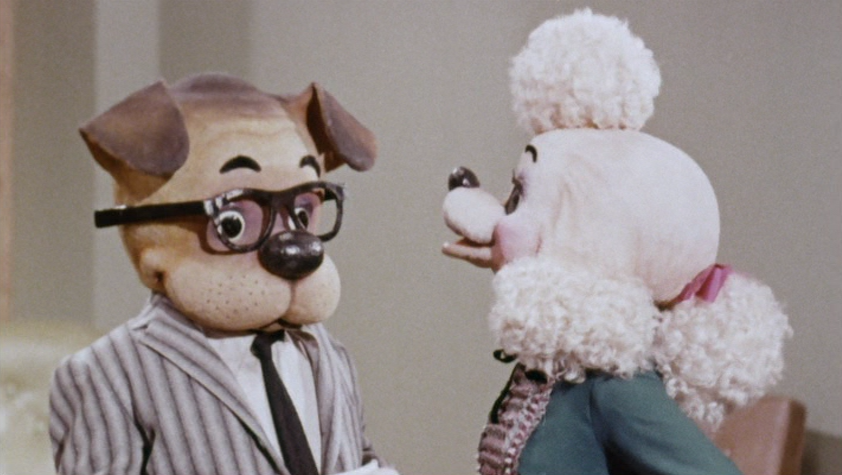
Quite a bit of time is used to explore Superman’s use in commercials and ads, both for mundane things like cereal and other products, and for improving the popular outlook on the war efforts. In a funny moment, it is pointed out that George Reeve and Jack Larson starred together in a cereal commercial, eating breakfast together in the kitchen; Noel Neill was not allowed to be in the commercial because they didn’t want to give audiences the idea that Lois Lane and Clark Kent lived together, but somehow it was okay to give audiences the idea that Jimmy Olsen and Clark Kent lived together (I’m making no comment, I just thought it was amusing). Although Superman was used to promote the American stance on WWII, and the covers of the Superman comics often featured propagandist images, the contents of the comics mostly shied away from addressing the war. This was a wise move, as having the invincible character defeat the Nazis in an afternoon would have shown a certain amount of disrespect for the military personnel that were actually on the front lines.
Less successful, in my estimation, is the attempt to analyze Superman as a messiah-figure. Most of the interviewees don’t really seem to understand what makes the character appealing to them; or, they seem to think because Superman’s mythology parallels some characters of the bible (notably Moses and Jesus Christ) that in some way the fictional character—and belief in what he represents—can be a substitute for religion. They posit that Superman represents some kind of American ideal of perfect morality and incorruptible character. Still others, like the creators of Smallville, like the edginess of portraying Kal-El bare-chested on a cross, simply for the provocative imagery. I don’t disagree that the parallels are there, or that the imagery is provocative, but I don’t think any of the people involved in putting this together really understand why those parallels are deeply compelling to people, or why those images are provocative. It seemed as if they thought simply recognizing the connections was considered deeply profound, but it would have been a very nice addition to have a religious scholar, a disciple of Jung, or another such professional give a brief analysis of why humanity is drawn to the messianic archetype.
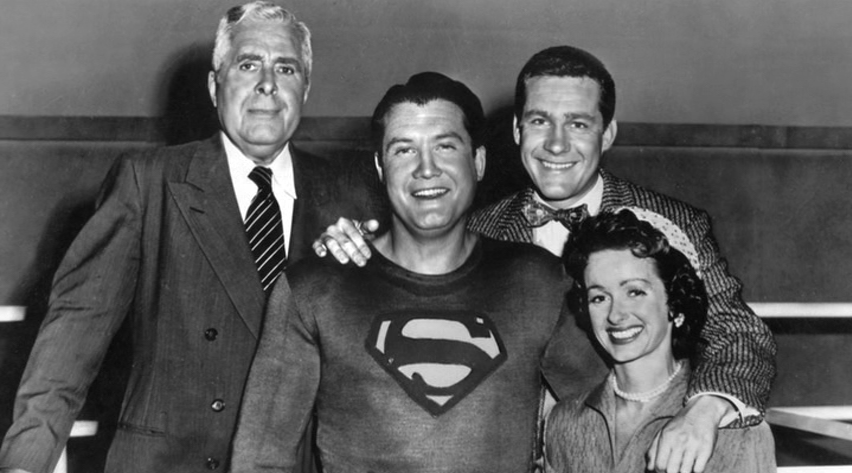
My last complaint is that the time seems inappropriately divvied. Whereas only a few moments are spent on major events in the comics, such as The Death of Superman (though a decent amount of time is dedicated to the marriage of Lois Lane and Superman), and Superman: The Animated Series and Justice League are likewise skimmed past, huge amounts of the runtime are dedicated to the imminent release of Superman Returns, and Smallville, which was about halfway through its ten season run. In other words, the documentary was solid, but spent too much time promoting current products.
Look, Up in the Sky! is a worthwhile look into the history of Superman, the archetypal superhero and pop culture icon. A wealth of information is presented to the viewer, and even though many of the adaptations of the character have fallen flat, many have been great, and the documentary does a great job of presenting the good and the bad in engaging fashion. If you are interested in the historical context of Superman, this documentary is sure to be worth your time; if instead you are eager for additional Superman content after having seen whatever film adaptation happens to be gracing the big screen today, perhaps look at the first Christopher Reeve film or the animated series.
1. There is a vintage first pressing up on eBay right now with an asking price of $711,000. Single pages of the first pressing have sold for multiple thousands of dollars.